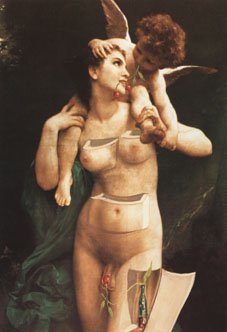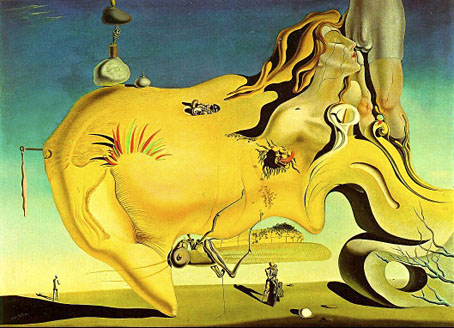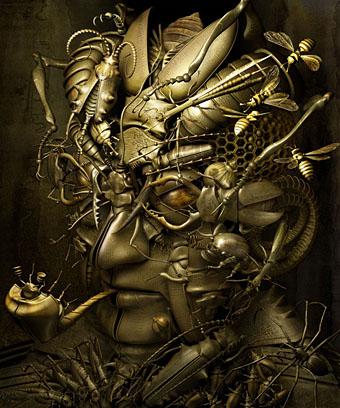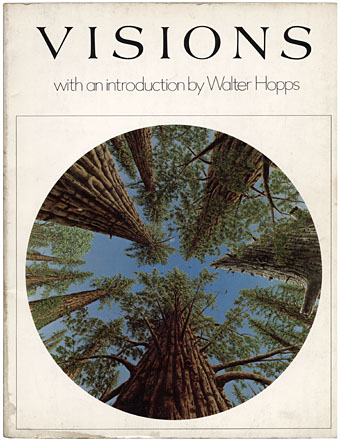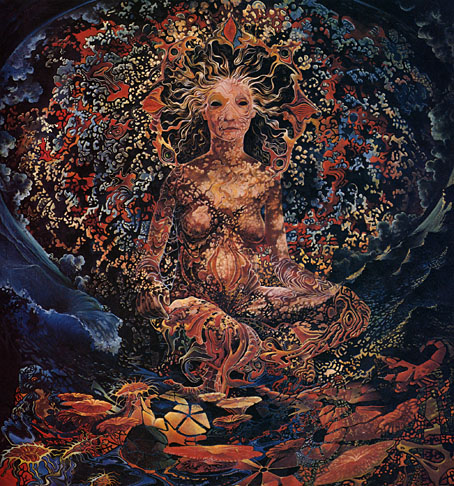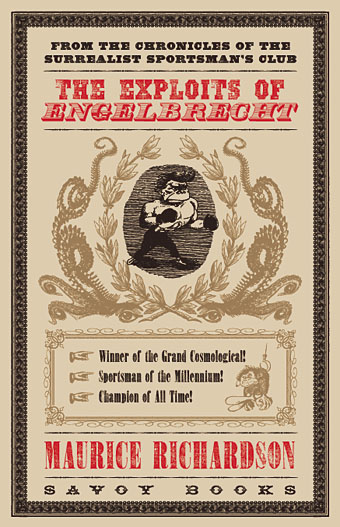
I’m surfacing this week from a busy couple of months having finished (more or less) two substantial book designs. I mentioned the redesign of The Exploits of Engelbrecht a couple of weeks ago and it’s been a pleasure to have another bash at this. The original design wasn’t bad as such, especially compared to the rudimentary first edition from 1950, it’s more that the production standards were raised so much by the Savoy titles which followed that I frequently felt dissatisfied with it. You can see the new cover above and I’ll post some additional examples nearer publication (ETA for that is still vague).
Maurice Richardson’s tales of the dwarf surrealist sportsman are classics of eccentric comedy and it’s been a privilege having the opportunity to reintroduce them to a new audience. I intended the new dust jacket to be reminiscent of an old theatre or boxing poster and the brown and red design will be printed on uncoated textured paper to augment that effect. In addition to this volume I’ve also designed an edition of Jeff VanderMeer‘s Ambergris novel Shriek: An Afterword for Wyrm Publishing. Once again, I’ll post more details of that closer to release.
So now I take a deep breath and see what’s next. There’s another book project imminent but I’ve been asked not to say anything about that for the time being (don’t you love a mystery?). In spare moments such as these I’ve been trying to keep working on the collected edition of the Reverbstorm comics I created with Dave Britton for Savoy. That series has always been an important part of my work, more important in many ways than The Haunter of the Dark, and it’s frustrating to have over 250 pages of some of my best artwork sitting around virtually unseen. I was supposed to have the book finished off last year but other projects kept intervening. One of the resolutions for this year has been to at least complete the scanning and re-lettering, then we’ll see where it fits into Savoy’s schedule. Watch this space.


